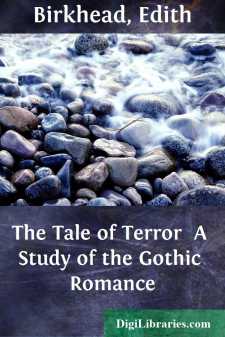Categories
- Antiques & Collectibles 13
- Architecture 36
- Art 48
- Bibles 22
- Biography & Autobiography 813
- Body, Mind & Spirit 142
- Business & Economics 28
- Children's Books 14
- Children's Fiction 11
- Computers 4
- Cooking 94
- Crafts & Hobbies 4
- Drama 346
- Education 46
- Family & Relationships 57
- Fiction 11829
- Games 19
- Gardening 17
- Health & Fitness 34
- History 1377
- House & Home 1
- Humor 147
- Juvenile Fiction 1873
- Juvenile Nonfiction 202
- Language Arts & Disciplines 88
- Law 16
- Literary Collections 686
- Literary Criticism 179
- Mathematics 13
- Medical 41
- Music 40
- Nature 179
- Non-Classifiable 1768
- Performing Arts 7
- Periodicals 1453
- Philosophy 64
- Photography 2
- Poetry 896
- Political Science 203
- Psychology 42
- Reference 154
- Religion 513
- Science 126
- Self-Help 84
- Social Science 81
- Sports & Recreation 34
- Study Aids 3
- Technology & Engineering 59
- Transportation 23
- Travel 463
- True Crime 29
The Tale of Terror A Study of the Gothic Romance
by: Edith Birkhead
Categories:
Description:
Excerpt
CHAPTER I - INTRODUCTORY.
The history of the tale of terror is as old as the history of man. Myths were created in the early days of the race to account for sunrise and sunset, storm-winds and thunder, the origin of the earth and of mankind. The tales men told in the face of these mysteries were naturally inspired by awe and fear. The universal myth of a great flood is perhaps the earliest tale of terror. During the excavation of Nineveh in 1872, a Babylonian version of the story, which forms part of the Gilgamesh epic, was discovered in the library of King Ashurbanipal (668-626 B.C.); and there are records of a much earlier version, belonging to the year 1966 B.C. The story of the Flood, as related on the eleventh tablet of the Gilgamesh epic, abounds in supernatural terror. To seek the gift of immortality from his ancestor, Ut-napishtim, the hero undertakes a weary and perilous journey. He passes the mountain guarded by a scorpion man and woman, where the sun goes down; he traverses a dark and dreadful road, where never man trod, and at last crosses the waters of death. During the deluge, which is predicted by his ancestor, the gods themselves are stricken with fear:
"No man beheld his fellow, no more could men know each other. In heaven the gods were afraid … They drew back, they climbed up into the heaven of Anu. The gods crouched like dogs, they cowered by the walls."[1]
Another episode in the same epic, when Nergal, the god of the dead, brings before Gilgamesh an apparition of his friend, Eabani, recalls the impressive scene, when the witch of Endor summons the spirit of Samuel before Saul.
When legends began to grow up round the names of traditional heroes, fierce encounters with giants and monsters were invented to glorify their strength and prowess. David, with a stone from his sling, slew Goliath. The crafty Ulysses put out the eye of Polyphemus. Grettir, according to the Icelandic saga, overcame Glam, the malevolent, death-dealing vampire who "went riding the roofs." Beowulf fearlessly descended into the turbid mere to grapple with Grendel's mother. Folktales and ballads, in which incidents similar to those in myths and heroic legends occur, are often overshadowed by terror. Figures like the Demon Lover, who bears off his mistress in the fatal craft and sinks her in the sea, and the cannibal bridegroom, outwitted at last by the artfulness of one of his brides, appear in the folk-lore of many lands. Through every century there glide uneasy spirits, groaning for vengeance. Andrew Lang[2] mentions the existence of a papyrus fragment, found attached to a wooden statuette, in which an ancient Egyptian scribe addresses a letter to the Khou, or spirit, of his dead wife, beseeching her not to haunt him. One of the ancestors of the savage were-wolf, who figures in Marryat's Phantom Ship, may perhaps be discovered in Petronius' Supper of Trimalchio. The descent of Bram Stoker's infamous vampire Dracula may be traced back through centuries of legend. Hobgoblins, demons, and witches mingle grotesquely with the throng of beautiful princesses, queens in glittering raiment, fairies and elves....


